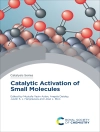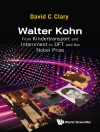Thin-layer chromatography (TLC) is widely used particularly for pharmaceutical and food analysis. While there are a number of books on the qualitative identification of chemical substances by TLC, the unique focus here is on quantitative analysis. The authors describe all steps of the analytical procedure, beginning with the basics and equipment for quantitative TLC followed by sample pretreatment and sample application, development and staining, scanning, and finally statistical and chemometric data evaluation and validation. An important feature is the coverage of effect-directed biological detection methods. Chapters are organized in a modular fashion facilitating the easy location of information about individual procedural steps.
Tabla de materias
History of Planar Chromatography.- The Theoretical Basis of Thin-Layer Chromatography (TLC).- The Stationary Phase in Thin Layer Chromatography (TLC).- The Mobile Phase in Adsorption and Partition Chromatography.- Preparing and Applying Samples.- Basis for TLC Development Techniques.- Specific Staining Reactions.- Bioeffective-linked Analysis in Modern HPTLC.- Planar Chromatography Detectors.- Diffuse Reflectance from TLC Layers.- Fluorescence in TLC Layers.- Chemometrics in HPTLC.- Reciprocal Model.- Statistics for Quantitative TLC.- Planning an Analysis and Validation in TLC.












